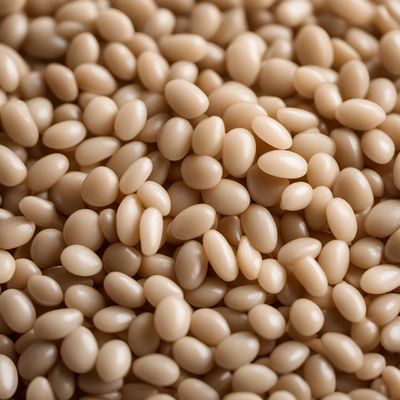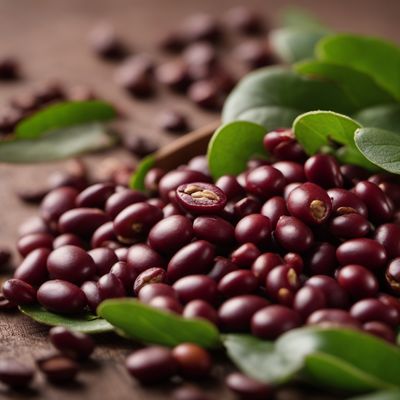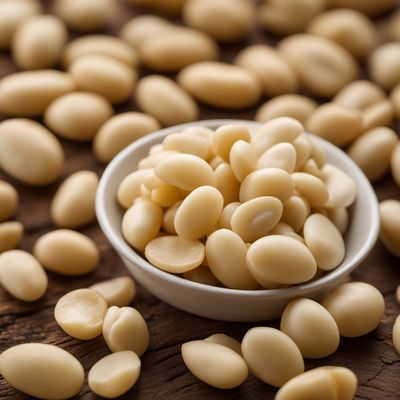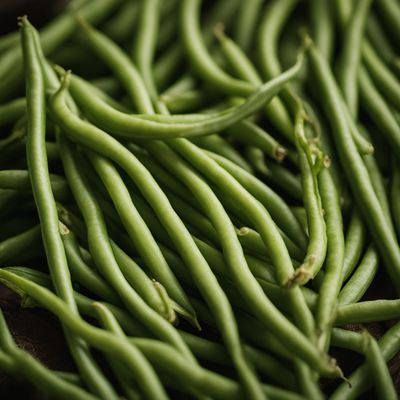
Ingredient
Monantha vetches (dry)
The Versatile Monantha Vetches
Monantha vetches are small, dried legumes that have a slightly nutty flavor and a firm texture. They are commonly used in soups, stews, and salads, and can also be ground into flour for baking. These vetches are a great source of plant-based protein and dietary fiber.
Origins and history
Monantha vetches have been cultivated for centuries and are believed to have originated in the Mediterranean region. They have a long history of culinary use in various cuisines, including Middle Eastern and Mediterranean dishes. These legumes were highly valued for their nutritional content and ability to thrive in arid climates.
Nutritional information
Monantha vetches are rich in protein, dietary fiber, and essential minerals such as iron and magnesium. They are also low in fat and cholesterol, making them a healthy addition to any diet. A 100-gram serving of dry vetches provides approximately 350 calories, 20 grams of protein, and 15 grams of dietary fiber.
Allergens
May contain traces of gluten and soy.
How to select
When selecting Monantha vetches, look for packages that are tightly sealed and free from moisture or insect damage. The vetches should have a uniform color and texture, without any signs of discoloration or mold. Opt for organic or locally sourced vetches whenever possible to ensure the highest quality and freshness.
Storage recommendations
Store Monantha vetches in an airtight container in a cool, dry place, away from direct sunlight. They can be kept for up to a year without losing their flavor or nutritional value. If the vetches are exposed to moisture, they may become moldy or lose their texture.
How to produce
Monantha vetches can be grown in a home garden or purchased from specialty stores or online seed suppliers. They require well-drained soil and full sun to thrive. Sow the seeds in early spring and provide regular watering throughout the growing season. Harvest the vetches when the pods have dried and turned brown.
Preparation tips
To prepare Monantha vetches, soak them in water overnight to soften them before cooking. Drain and rinse the vetches, then add them to soups, stews, or salads. They can also be ground into flour and used in baking recipes. When cooking, simmer the vetches in water or broth until tender, which usually takes about 45 minutes to an hour. Add salt and other seasonings to taste. To enhance their flavor, you can also sauté the vetches with onions, garlic, and spices before adding them to your dish.
Substitutions
Lentils, chickpeas, or other types of dried beans can be used as substitutes for Monantha vetches in most recipes. They will provide a similar texture and flavor to the dish.
Culinary uses
Monantha vetches are commonly used in Middle Eastern and Mediterranean cuisines. They are often added to soups, stews, and salads, or ground into flour for baking bread and pastries. These vetches can also be sprouted and used in salads or as a garnish for various dishes.
Availability
Commonly available in Mediterranean countries such as Greece, Turkey, and Lebanon.
More ingredients from this category » Browse all

Broad beans (dry)
Hearty and Nutritious: The Dried Legume Powerhouse

Rice beans (dry)
The Versatile Powerhouse: Rice Beans

Soyabeans for consumption (dry)
The Versatile Legume

Ervils (dry)
The Nutritional Powerhouse: Exploring the Versatility of Dry Ervils

Azuki beans (dry)
The Tiny Powerhouse: Azuki Beans

Lima beans (dry)
The Versatile Lima Beans

Yardlong beans (dry)
The Nutrient-Packed Legume: Yardlong Beans

Runner beans (dry)
The Versatile Legume: Exploring the World of Dry Runner Beans

Black eyed peas (dry)
The Lucky Legume

Mung beans (dry)
The Mighty Green Legume

Lablab beans (dry)
The Versatile Legume: Lablab Beans

Borlotti or other common beans (dry)
The Versatile Dried Beans